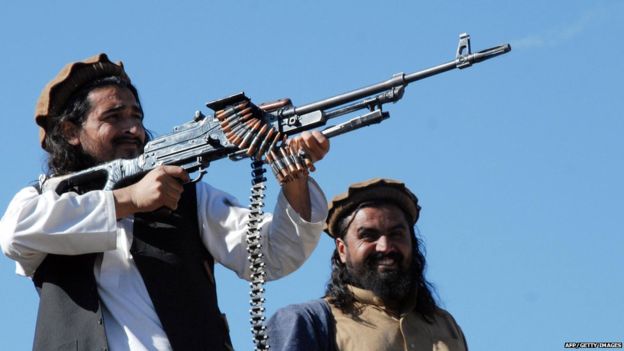Trump Needs To Address Afghanistan Now: John McCain

NEW DELHI: Senator John McCain pushed the White House to pay attention to Afghanistan, saying that President Donald Trump needs a clear plan of action to prevent the country from sliding into chaos. President Trump has remained largely silent on Afghanistan since being elected, leading analysts to wonder which was US-policy is set to go.
“President (Donald) Trump and his administration must treat Afghanistan with the same urgency as the fight against (the Islamic State group), or else this stalemate risks sliding into strategic failure,” senator McCain said. “Make no mistake: Afghans are fighting ferociously to defend their own country from our common enemies. But we must also recognize that America is still at war in Afghanistan against the terrorist enemies that attacked our nation on September 11th.”
McCain’s statement comes as the Taliban claimed responsibility for twin attacks in Kabul on Wednesday, with fighting set to see a renewed push as better weather enables what the militants call a ‘Spring Offensive.’ It also comes as civilian casualties touch yet another record high, with the United Nations Mission in Afghanistan (UNAMA) documenting 11,418 civilian casualties (3,498 deaths and 7,920 injured) in 2016 -- representing a three per cent increase in total civilian casualties compared to 2015.
Despite the above, Trump’s policy on Afghanistan remains unclear. Last month, in an indication of which way US policy in Afghanistan may go, the commander of US forces in Afghanistan asked for several thousand new troops to break the stalemate that has developed in the conflict-torn country. Gen John Nicholson told a Senate panel that he was facing a shortfall of troops necessary for training Afghan forces who will ultimately replace their US and Nato counterparts. “They could come from our allies as well as the United States. We have identified the requirement and the desire to advise below the corps level. It would enable us to thicken our advisory efforts across the Afghanistan mission,” the General said.
Although Nicholson referred to the situation in Afghanistan as a stalemate, he also acknowledged that the Taliban has gained territory in the country in recent years. A report by the Special Inspector General for Afghan Reconstruction (SIGAR) office submitted earlier in the year corroborates this, noting a huge decline in the territory controlled by the American-supported Afghan government with corresponding increase in influence of the Taliban and other militant groups, including the Islamic State. In a worrying assessment, the report notes that the Afghan government had 57.2 percent of the country under its control by the end of 2016 — a 6.3 percent decrease from 2015.
Reports from the ground paint an even more worrying picture, with the Taliban effectively in control of several Afghan districts, most notably Kunduz and Helmand.
Nicholson blamed Russia in part for the scenario, saying that Russia was seeking to undermine the US and Nato in Afghanistan and adding that there was concern “about the increasing level” of unspecified Russian support for Taliban insurgents.”
Allegations aside, Russia does seem to be stepping up its role in Afghanistan, moving in to fill the vacuum that an unclear US policy is fast creating. Russia recently held a six nation conference on conflict-torn Afghanistan’s future in Moscow, inviting India, Iran, Pakistan, China, and Afghanistan. The conference was Russia’s second major intervention on Afghanistan, after it had hosted a tripartite meet last year that involved only itself, China and Pakistan.
It is worth reiterating that Trump’s inaction is only part of the problem when it comes to US policy in Afghanistan, which faced challenges even under President Obama as plans to rollback American troops were repeatedly extended and modified. Even today, more than 13,000 Nato military personnel remain in Afghanistan, most of whom are American. The original plan was to withdraw all troops by Afghanistan by 2014.
Trump, interestingly, has publicly advocated the rollback of US troops from Afghanistan, and there is no clear indication regarding how he will respond to the General’s request. Although he has moved on several fronts since assuming Presidency, Trump has remained uncharacteristically silent on Afghanistan, and the little that he has said has been largely contradictory.
In the past, Trump has described the US’ involvement in Afghanistan as a “disaster” -- indicating that US troops should be brought home. However, when he spoke to Afghan President Ashraf Ghani in December last year, he assured the American-supported Afghan President of Washington’s continuing cooperation. Following the assurance, Trump failed to invite Afghanistan to his inauguration -- sending circles buzzing about the Trump administration’s potentially changing stance on Afghanistan.
Related to the security situation in Afghanistan is the growing presence of the Islamic State in the country, with a series of recent attacks being claimed by the militant group. Although Trump has put forth a policy of wiping out the Islamic State, there is absolutely no clarity regarding how he intends to do so, and whether the group’s arms and affiliates outside of Syria and Iraq -- in Afghanistan, Pakistan, Yemen, Libya, Egypt, Tunisia (to name a few) -- figure in the larger plan.
The fact that’s quickly emerging is that no matter which way Trump finally decides to go, the disasters of the war in Afghanistan are becoming increasingly apparent. Despite a 15 year engagement and billions of dollars pumped in, not to mention lives lost, the Afghan government today controls less territory than it did at any point since the invasion in 2001. The Taliban is growing stronger, with civilian casualties rising year after year to record levels. At the moment, the silence is only adding to the flux.



